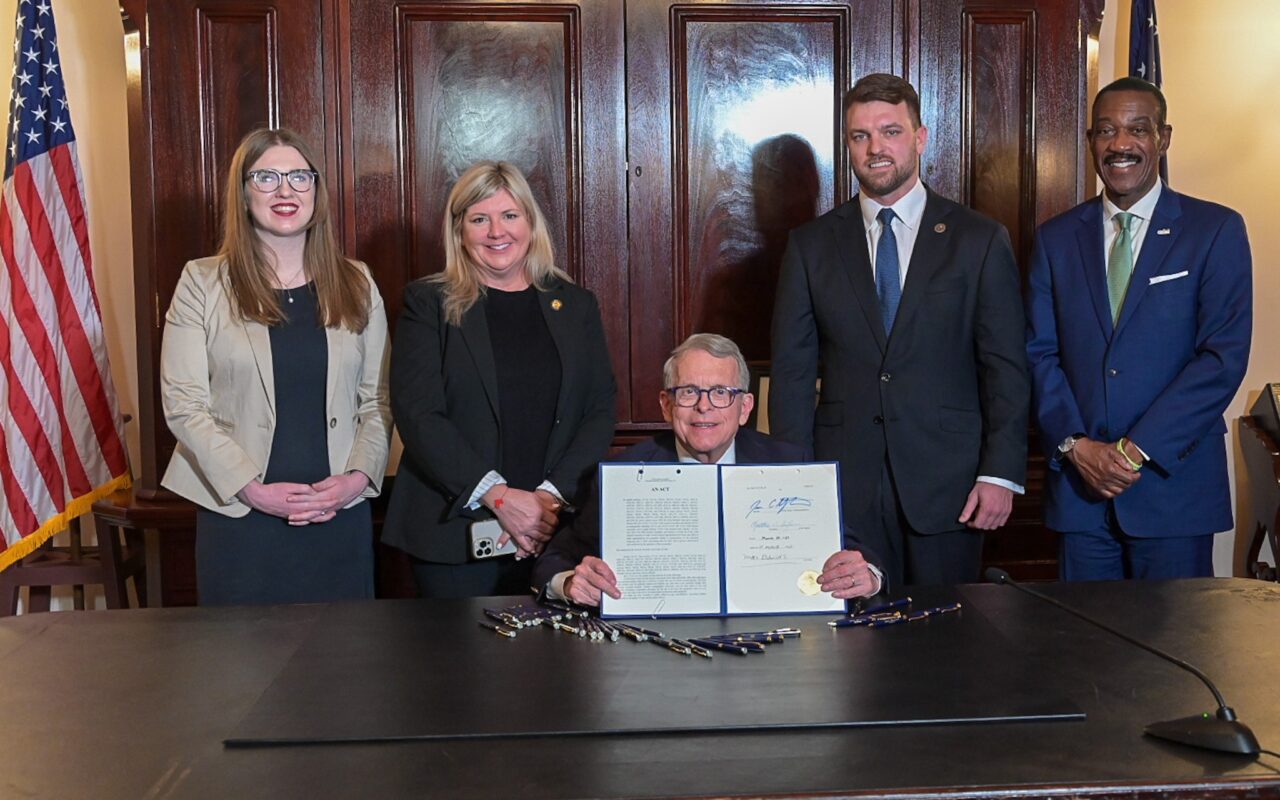By SAMANTHA HENDRICKSON Associated Press/Report For America, and staff
COLUMBUS (AP) — Gov. Mike DeWine signed a nearly $13.5 billion state transportation budget Friday, touting new rail safety measures that were included in response to the February train derailment and toxic chemical spill in East Palestine.
The measure primarily funds bridges and highway projects over the next two years. It cleared the GOP-dominated Legislature with bipartisan support. It also lowers registration fees for plug-in hybrid vehicles, and raises the threshold for the amount of money a local government can spend on projects such as bridge repairs by its own public workforce before it must bid them out to private contractors.
The railway safety measures would mandate a two-person crew for freight trains and require that the wayside detectors used to help spot problems be installed in shorter intervals of 10 to 15 miles apart, with oversight from the Ohio Department of Transportation and the Public Utilities Commission of Ohio, among other provisions. Currently, the Federal Railroad Administration allows some wayside detectors to be spaced up to 25 miles apart.
The PUCO also would have to examine different kinds of railway detectors and cameras that are in use and submit its findings to the General Assembly.
“We are ensuring that Ohio’s railroads follow the best practices in monitoring the railroad equipment and holding them responsible for their actions,” DeWine said.
Whether the state has the right to impose these provisions remains a point of debate. The Ohio Railroad Association, a trade group, argued that several of the measures are preempted by federal law. State lawmakers say the General Assembly can put statewide safeguards in place to help protect constituents.
DeWine said enacting those provisions puts Ohio on record as taking a firm stance on rail safety concerns the East Palestine derailment brought into focus. He said he hopes the federal government will also take steps to strengthen rail safety.
Congress is considering safety proposals that would require freight train crews to continue to have two people, require more hot bearing detectors to be installed, and ensure railroads notify states about the hazardous materials they are transporting, among other changes.
Road & highway projects
The new budget includes $360 million in highway safety funding to address dangerous intersections and improve safety for bicyclists and pedestrians, and nearly $7.5 billion for the Ohio Department of Transportation for state highway improvements, including more than $2.2 billion for pavement upgrades, $700 million for bridge improvements, $964 million for local government programs and projects, $200 million for transit, and $579 million for major projects.
Approximately $3 billion are earmarked for the Brent Spence Bridge Corridor Project to improve travel through Cincinnati.
Planning for the future
The transportation department, the Department of Development and the Governor’s Office of Workforce Transformation
will also undertake a $10 million transportation study, looking at where Ohio’s population is projected to grow, where the state’s workforce is expanding, and what Ohio’s projected transportation system needs will be over the next three decades.
This study will help identify gaps and identify needs across the state, including the vital highway artery between Toledo and Columbus, which links central Ohio manufacturers with a Great Lakes shipping hub and is the largest freight corridor between Columbus and Canada.
___
Samantha Hendrickson is a corps member for the Associated Press/Report for America Statehouse News Initiative. Report for America is a nonprofit national service program that places journalists in local newsrooms to report on undercovered issues.

